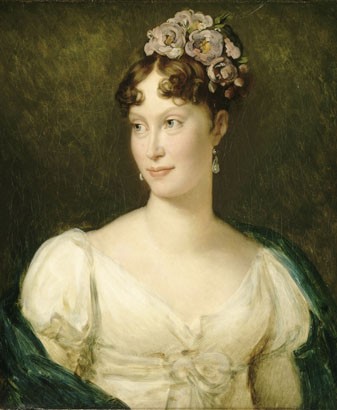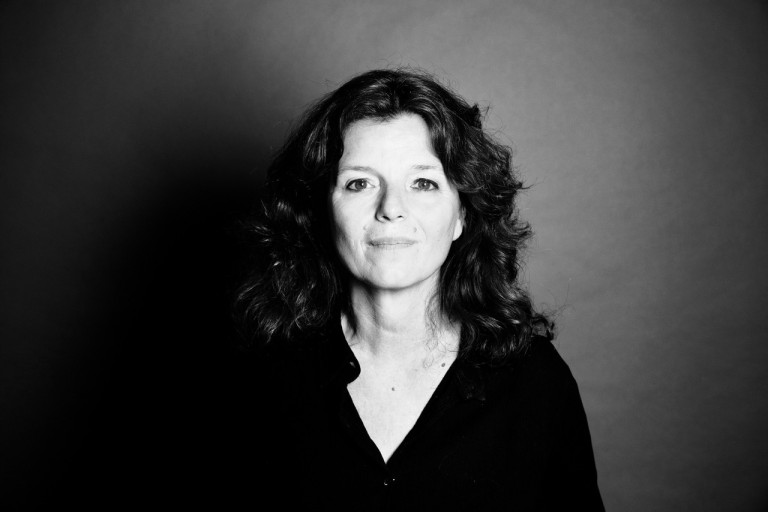the politics of love Napoleon I and Marie-Louise in Compiègne
Du 28 March 2010 Au 19 July 2010
- Description
- Horaires
- Tarifs
This exhibition is organised by the Réunion des Musées Nationaux and the Musées et Domaine Nationaux du Palais impérial de Compiègne.
This first exhibition in France to evoke Marie-Louise, Empress of the French, intends to celebrate the two hundredth anniversary of the second marriage of Napoleon I to the young Archduchess of Austria, Marie-Antoinette’s grand-niece. It describes the extraordinary preparations for the arrival of the new Empress at the Palace of Compiègne, the splendours of the wedding ceremonies in Paris and the subsequent honeymoon in Compiègne. More than 200 works, wedding gifts, commissions for the sovereign’s trousseau and items of furniture, have been brought together: paintings, drawings, prints, sculptures, objets d’art, clothes, silks and jewellery. The exhibition has special loans from French museums (Louvre, Versailles, Fontainebleau, Fondation Napoléon and Fondation Thiers, etc) as well as international loans (Italy, Switzerland, Germany etc).
Napoleon I chose to receive his second wife at the Palais de Compiègne, just as Marie-Antoinette had been received here in 1770 by Louis XV and the Dauphin, the future Louis XVI. This event took place on 27 March 1810 and, on the orders of the Emperor who in his impatience brushed aside all protocol, the official meeting planned for Soissons was cancelled. The exhibition sets out to show the sumptuous refurbishment of the palace and the park before 1810. The works started in 1807 under the direction of the architect Louis-Martin Berthault, and were hurried forward for the arrival of the Archduchess. Large portraits of the great figures of the Empire were presented in the new Galerie des Ministres (Prud’hon, Fabre, Lefèvre, etc), paintings by great masters from many different schools (Le Dominiquin, Patel, Flinck, etc) were brought together in the new Galerie des Tableaux de l’Impératrice, and Canova’s famous marbles on the theme of Psyche and Love, (the standing version of this is on special loan from the Louvre), were placed at the entrance to the imperial apartments. The furniture, made by cabinetmakers Jacob-Desmalter and Marcion, as well as the Sèvres porcelain ordered for the palace, illustrates one of the high point of decorative art at a time when the Empire style was at its peak.
The grandeur of the civil and religious wedding celebrations at the Palace of Saint-Cloud then in the Salon Carré of the Louvre, together with the festivities organised in Paris up to 1st July 1810, reflecting an Emperor at the height of his power, created a wealth of iconographic images (Rouget’s painting inspired by David’s Coronation of Napoleon, drawings by Zix and Prud’hon, portraits by Gérard, Isabey, etc).
After the marriage ceremonies, the couple stayed in Compiègne until the end of April. For one month there was a period of respite when Marie-Louise established a peaceful rhythm of life for the Emperor, encouraging him to enjoy the arts, painting, music and embroidery, while sharing his love of hunting, evoked in the magnificent wallpaper Hunts of Compiègne (Fondation du Musée de la Chasse et de la Nature, Paris). Napoleon I, very attentive, was permanently at the side of his young wife; although intimidated, she was immediately charmed by the man who had always been known as the “Corsican Monster”. Works like no other, particularly pieces of furniture produced and commissioned specially for Marie-Louise (embroidery frame, easel, bookcases by Jacob-Desmalter, washstand by Marcion, etc) and everyday items (embroidery box, travel medicine chest, books bearing her coat of arms, previously unseen letters, etc) are evidence of this remarkable welcome.
Finally, the 1810 Salon, which represents the greatest event and the outstanding artistic skill of that year, is evoked in the exhibition through a significant selection of paintings (Guérin’s Aurora and Cephalus, Franque’s Allegory of France, Napoleon and his Nephews and Nieces by Ducis, The Arrival of the Imperial Couple in Antwerp by Crépin, etc), and sculptures (Chaudet, Chinard, Moutoni, etc) illustrating the splendours of the nation.
As well as the political significance of this dynastic union through which the Emperor, searching for legitimacy, acquired some ancestors, this alliance with the oldest reigning Imperial family in Europe was also regarded as a political act of reconciliation, to expiate the crime committed against Marie-Antoinette. It came in the context of a short period of peace that encouraged artistic commissions. The consolidation of the Empire, at the height of its territorial expansion, was finally personified in the King of Rome, born in March 1811, less than a year after the wedding. Portrait of the Empress Marie-Louise presenting the King of Rome, by François Gérard illustrates this event and closes the exhibition.
Curators
Emmanuel Starcky, director of the Palace of Compiègne
Hélène Meyer, curator at the Palace of Compiègne
Anne Dion-Tennebaum, chief curator of objets d’art at the Musée du Louvre
David Mandrella, art historian
Scenography
Ateliers Ricou
Useful Information
Address
Musée National du Palais Impérial de Compiègne
Place du Général de Gaulle
60 200 Compiègne
+33 (0)3 44 38 47 00
Daily except Tuesdays and 1 May, 10am to 6pm (last admission 5.15pm).
_
includes the permanent collections, free admission for under 26 year olds and for everyone on the first Sunday of the month activity books and audioguides are available for visitors
_


